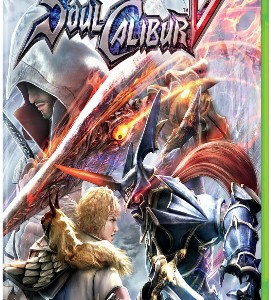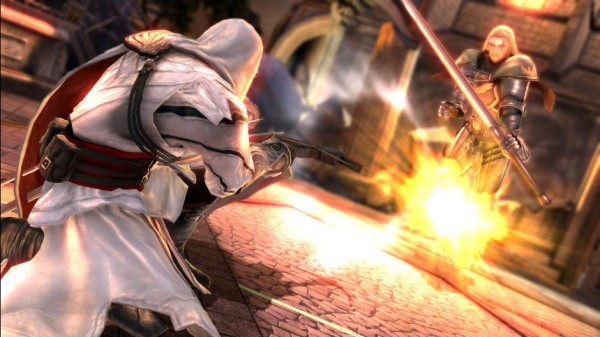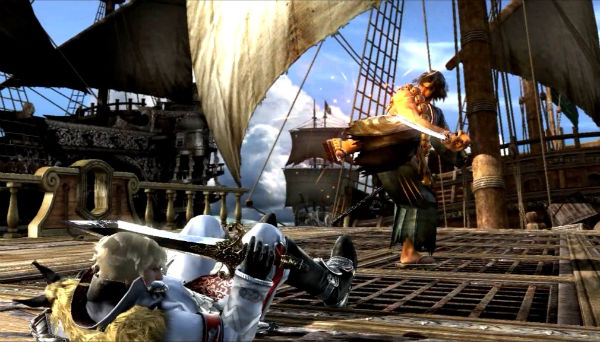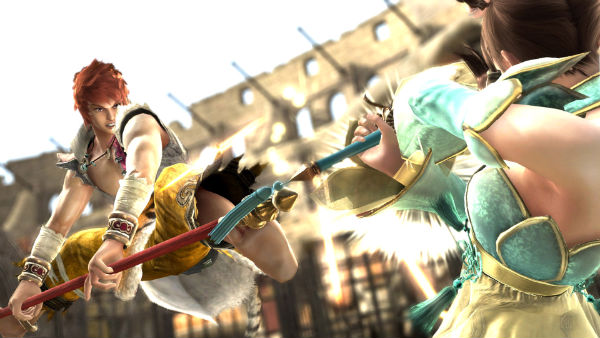At some point or another, everyone comes to a crossroad in their lives, needing to make a decision about which direction to take. Some people decide without hesitation, knowing exactly which route to choose. Others test the waters first, trying their hand at something as they gauge whether or not it’s the “right” way to go. In a time where developers are criticized for putting out the “same old thing”, criticism also flies when developers make drastic changes.
With its release of Soul Calibur V, Namco Bandai has made a bold move, but whether or not it sticks with that decision won’t be known for a few years. Admittedly, the Soul Calibur brand had begun to feel somewhat stale, and the changes made in Soul Calibur V aren’t the ones I’d hoped to see.
Up to this point, Soul Calibur always maintained a sense of strategy and it never became overly technical. There was a balance between technique and skill, even as far back as Soul Blade (Soul Edge in Japan), the grandfather of the entire series. Back then, the characters’ weapons would break if the player blocked too much, encouraging a certain amount of aggressiveness. The player couldn’t just try to guard every attack and remain reactionary, or else they’d be left to deal without a weapon. That aspect was cut once Soul Calibur was released, but it serves as an example of the strategy encouraged by the developer from the very beginning.
Soul Calibur V is less about the struggle for positioning and more about who can land the first hit. In fact, that has nearly everything to do with what I dislike about this installment. It’s as if Project Soul decided to answer the question no one asked: what if Soul Calibur were more like Street Fighter? And I can honestly say that I don’t like the answer.
This game is all about speed and combos. One wrong move and the player falls victim to an endless string of attacks, which can neither be blocked nor evaded. In fact, in matches against Patroklos (a newcomer), Siegfried and Nightmare, the incessant barrage of start-to-finish combo attacks is beyond maddening. A match can begin and end without the player ever having the opportunity to make a move of their own.
Then I jumped back into Soul Calibur II and IV, arguably the two best titles in the franchise. A number of my suspicions were confirmed, as I felt much more at-home with these two games. The pacing was much smoother. Additionally, attacks, blocks and parries were more balanced.
One aspect of the series that’s never been addressed has to do with the move lists. Why in the hell, after six games and 15 years, do I still have to translate letters and symbols to match the corresponding buttons on the controller?
Soul Calibur V also makes some tweaks in storytelling, however minimal they may be. There’s the occasional cutscene, but it’s mostly a back-and-forth of text conversations, which is still an improvement over the “text-box-on-top-of-the-world-map” style the series had been known for.
The arcade, multiplayer (both online and off) and character creation modes have all returned without any major changes. A handful of classic characters have also returned, all mainstays of the series, with the expected few newcomers in tow. Many of the new characters are spiritual successors to previous ones, maintaining the same fighting/weapon styles, but with a new coat of paint. It makes for a superficial sense of change, though I’d prefer some of the older characters over the new. Ubisoft’s Assassin’s Creed series lends its main character, Ezio Auditore, to the game. Out of all the guest characters the series has seen, Ezio fits as seamlessly as any.
The music in Soul Calibur V doesn’t live up to its reputation. Nothing’s bad, but nothing stands out. Soul Calibur II had, in my opinion, the best music in the series, but the other installments’ soundtracks were almost as notable. This is the first time I’ll refrain from purchasing the soundtrack for a game in the series. The musical pieces in previous games felt triumphant and majestic. It was truly a pillar of the series. Now, it just feels grand without direction. The music is loud and blaring, but it doesn’t evoke any real sense of emotion.
Another step back in Soul Calibur V pertains to the stage design. Again, like the music, nothing is particularly bad, but when compared to Soul Calibur IV, most stages appear uninspired and less dynamic. Of course, the game is gorgeous in every level, but it’s the style and presentation of the stages that are bland.
This appears to be Namco Bandai’s crossroad. When the next console cycle rolls around and Project Soul is working on the next game in the franchise, I hope Soul Calibur V remains a litmus test instead of a sign of style to come.





















